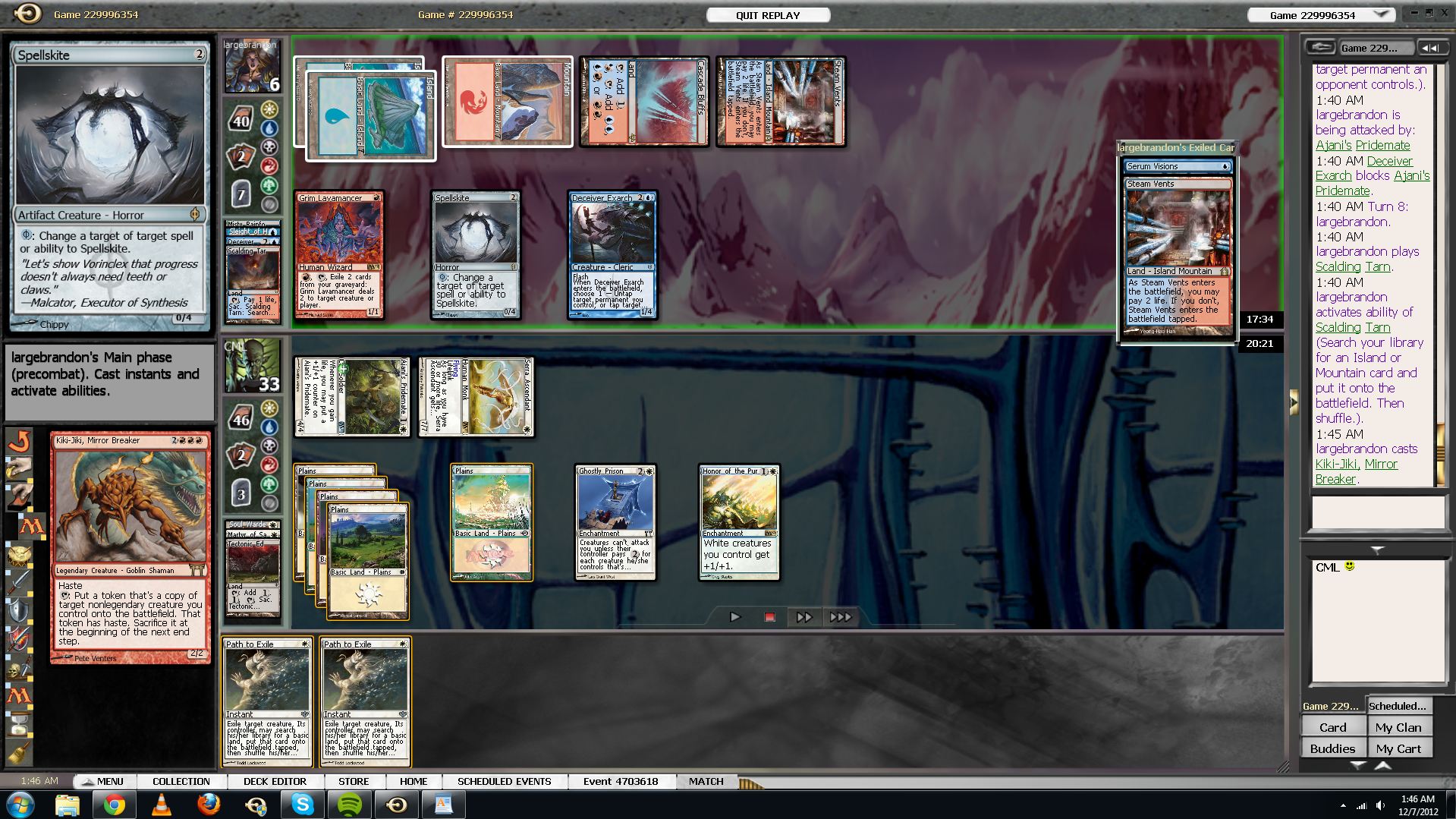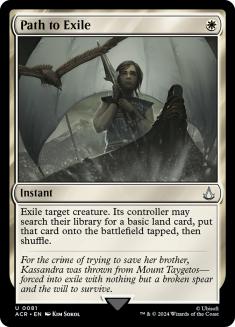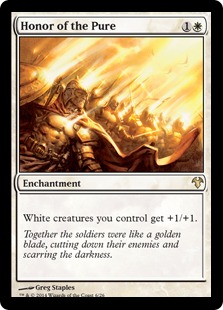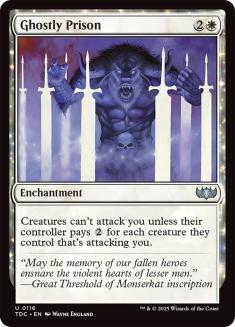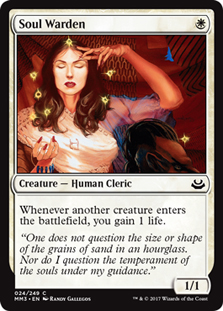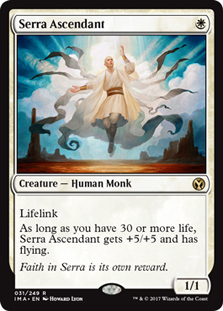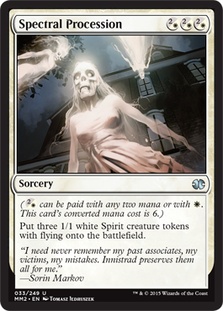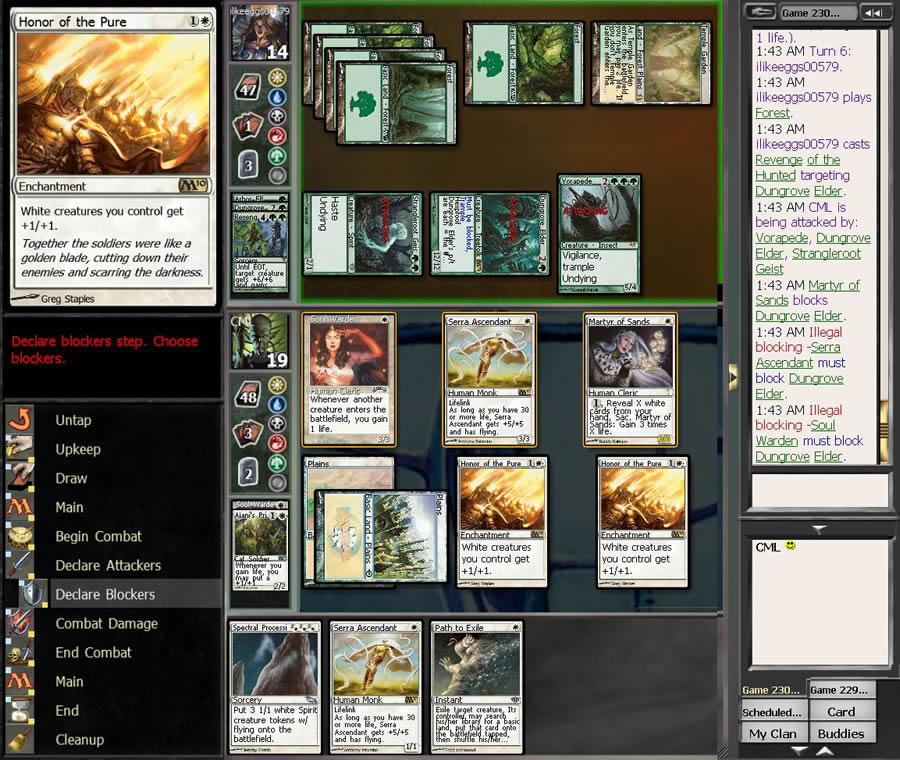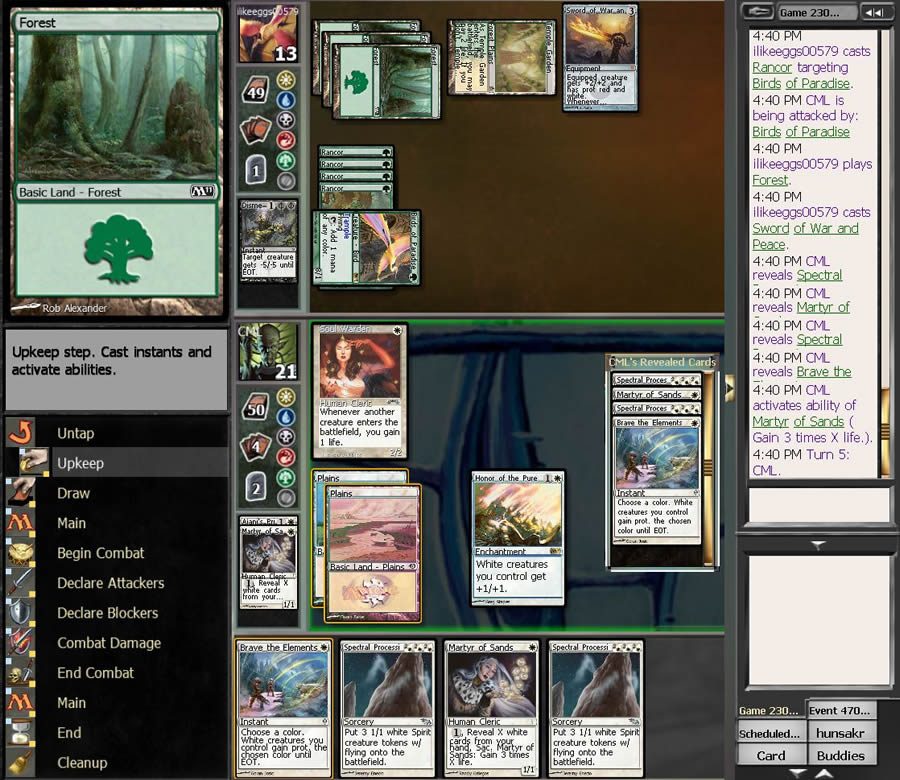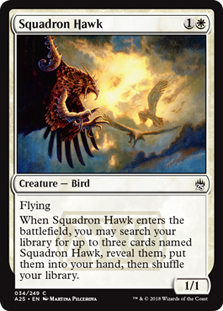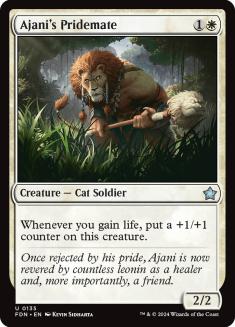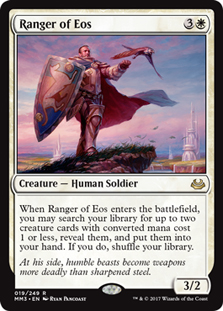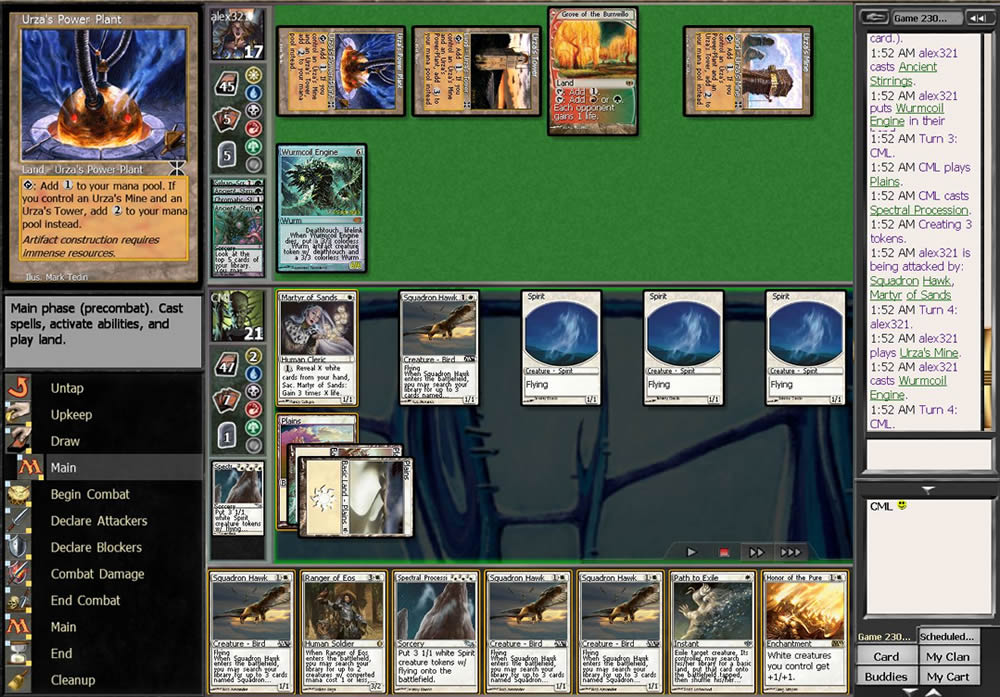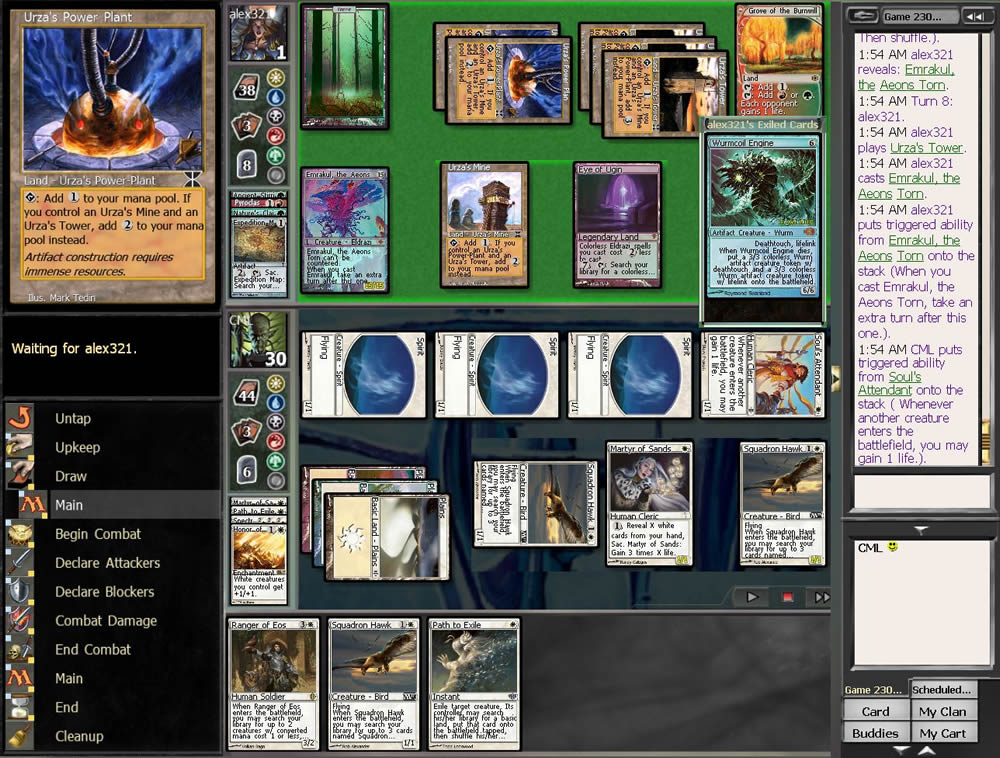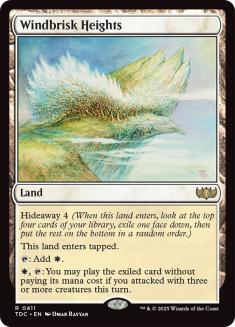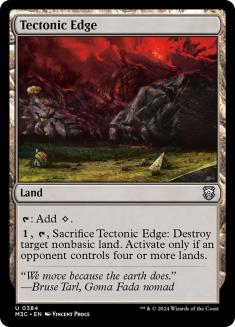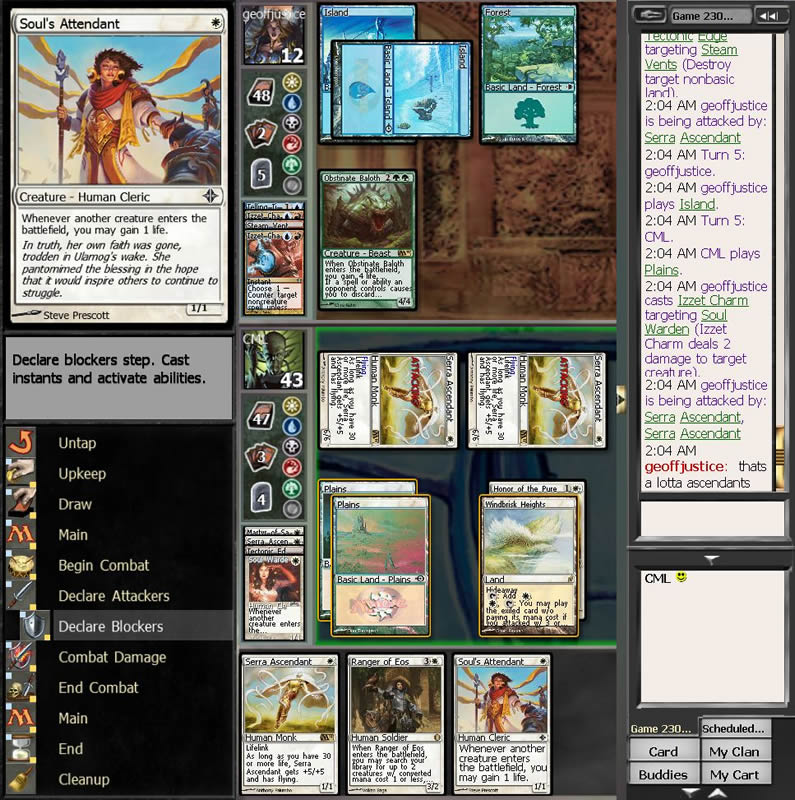Open Season
Modern Pro Tour Qualifier (PTQ) season is coming up, and I might be the only person that’s excited about this.
Yet! You should be excited, too—the main reason Modern is unpopular is that it’s unpopular. The other day my LGS (Local Gaming Store) tried to hold a small Modern tournament; only one person showed up. Someone like me can condemn the masses for their lack of taste, but the fact remains that the absence of a community is a huge practical difficulty in getting the thing off the ground. The good news is that Modern looks like it’s about to catch on. In Seattle, for example, Card Kingdom will even be running Modern FNMs. The more people play Modern, the more people will play Modern.
The idea behind Modern is to combine the richness of brewing in Standard with the challenge of piloting in Legacy. Modern’s detractors say it marries the mechanical play of Standard with the oppressive expense of Legacy. The reality of Modern is somewhere in between those two, closer to the former, I’d say. I like it and am looking forward to PTQs live and online, for out of all formats in Magic, everyone is surely the worst at Modern.
Before I jump into the rest of the article, I have a few comments on PTQ seasons. Why in the Nephilim’s names is Sealed season when it is? We get to play M13, then RTR, then Gatecrash—none of which will be played ever again in a few months, and all of which are presumably worse than the full-block RGD redux. Then Standard season, rather than encompassing the widest card pool (M13) and a big rotation (RTR), happens when the meta has settled and the format is at its most stale.
Et Resurrexit
I’ve been playing Martyr in Modern for a little over a year, and if I’m qualified to write any article on Magic, this is the one. Today we will be discussing the extreme, enormous, onerous, laborious, draining, demanding, exhausting, vitiating, mind-bending, skull-mucking difficulties of playing mono-colored aggro.
The idea of Modern Martyr is very simple. Though we have game against every deck, not every deck has game against us. Our good matchups are better than our bad matchups are bad. When the meta is good—and it often is—we will get far more free wins than free losses.
Martyr strategies are as old as the Martyr herself, but covering Martyr-Tron or old-school Martyr-Proc or even Conley Woods‘ Soul Sisters is outside the scope of this article. The advent of Modern Martyr was at Worlds 2011, when Alan Warnock got five free wins and zero losses (and a draw):
Creatures (21)
- 1 Weathered Wayfarer
- 4 Martyr of Sands
- 2 Figure of Destiny
- 4 Ranger of Eos
- 2 Student of Warfare
- 4 Serra Ascendant
- 4 Squadron Hawk
Planeswalkers (2)
Lands (23)
Spells (14)
Sideboard

This is a really, really rough list, primitive to the point of being more interesting as history than art. Warnock still managed to outperform pretty much everyone except Shuhei Nakamura, so there must be something to the idea. The main problem with the build is its extreme redundancy. This is a list that will never lose to aggro—Wild Nacatls, Delvers of Secrets, and Vault Skirges are on lockdown. But Warnock sacrifices far too much equity against control and combo just to take the aggro matchups from, say, 90 to 95 percent. Also, the board is abysmal. Torpor Orb, for example, is a great card to bring in—against us.
Here’s a parable: long ago, I was arguing on MTGSalvation that Warnock’s board blew chunks. Someone disagreed, providing longwinded rationales for why the cards were great choices and arguing, "You don’t just get to be 5-0-1 in Worlds with a horrible sideboard." Later Warnock told an interviewer that he had, in fact, thrown the board together minutes before the rounds started and then ignored it, making the other guy look like an English student who, completely devoid of taste, labors for weeks on a self-justifying paper whose arguments are arbitrary and whose thesis is wrong. There are too many netdeckers in liberal arts departments.
But I digress. When I first saw this list, I was over at my Grandma’s for Thanksgiving 2011 and settling in to the Palm Springs lifestyle of drinking and barking about the world going to hell in a hand basket. Martyr perfectly jived with the geezerly vibe: it had old people (Martyrs) who quickly died and went to heaven (Proclamation of Rebirth) where they were rewarded for such virtues as hard manual labor (Weathered Wayfarer) and parsimony (the entire deck used to cost less than a Tarmogoyf). I should also point out that the dinner that Thursday, excepting my cousin’s wife, was mono-white.
Almost (Internet) Famous
At that Worlds tournament, there was also a Soul Sisters deck that went 4-2. This led to the simple thought that in a field dominated by Zoo, mono-white has to be good. I reasoned that the Martyr deck was likely better, sprinkled it with the best cards from Sisters, and went on a tear on Magic Online.
Creatures (18)
Planeswalkers (2)
Lands (23)
Spells (17)

Though this was the strongest deck I’ve ever built (and, at the time, the best choice for the Modern meta), the best idea I had was to tell Craig Wescoe about it. This led to a ten-month stint of writing. If you remember nothing else from this article, remember that just asking someone is the best way to get a writing gig on one of these sites. It sure beats being good at Magic.
So those were the days. I pretty much always beat Zoo and Affinity, but my best matchup was the mirror. I must have gone like 18-1 against myself. Why? Sure, I played well and ran well and my build was well tuned for other Martyr decks, but I was also good at pressing F6 on a lag-light machine.
I’m going to try to put the deck in a historical context. For most of Magic’s history, answers were stronger than threats. Back when I was a little kid sleeving up Paladin en-Vec and Pouncing Jaguar, absurdities like a one-creature deck with all of the counterspells were commonplace. Heavy permission decks like Lorwyn Faeries and even Scars of Mirrodin U/B Control have recently been good choices. But with such mechanics as hexproof and undying and uncounterable spells, Wizards is veering violently towards the other extreme. Standard is now more of a questions format.
Whether this is good for the game or not I can’t say, but I do know it’s even truer in Modern than Standard. The card pool is bigger. Building a control deck that can deal with all the format’s diverse threats is impossible. Metagaming therefore becomes more important, and nobody’s going to devote any space in their 75 to hating out a cheesy white deck. The hybrid build also seeks to interact very little, which is fine by me—it’s the direction in which Magic is going.
Eventually my carriage turned into a pumpkin. The banning of Punishing Fire was beneficial, but the banning of Wild Nacatl was terrible for me. Zoo was basically a bye for Martyr, and its proactive plan and quick clock kept a lot of combo out of the meta. Overnight Zoo became bad, and bad combo matchups proliferated. Magic Online, with its high proportion of budget decks (Steam Vents, etc.), was especially hostile. My build may have been close to optimized, but it was bad. After I took a tuned list to a paper PTQ and went 1-2 drop, I retired the deck and did other things for a few months.
The Renaissance
The fact is: Martyr is good again. It may never be as popular as it was a year ago, but that is also good for us.
When I started following Modern again, I noticed that nearly all of the lists were straight Soul Sisters. From Warnock to me to now, mono-white has gone from heavy inevitable control to a life gain-heavy beatdown deck. An extra-aggro plan is good against a combo-heavy meta, but a lot of the cuts seemed unacceptable. Many only had one to three Martyrs. Many eliminated important slots on the top end. Many were even running fewer than four Serra Ascendant (the first person to justify this to me gets a signed copy of a Windbrisk Heights). All the lists played too few lands.
On MTGSalvation there are separate threads for Martyr-Proc and Soul Sisters. The former, in the absence of competitive results, has stagnated, and bad ideas rule the day: "Speaking of Swords, since these decks already run Squadron Hawks it wouldn’t be too hard to fit in one or two Steelshaper’s Gift and some Sword of Feast and Famine or Sword of Fire and Ice." (This is a bad and mana-intensive plan, and Swords are not white cards for Martyr. If you want a Sword, you want Light and Shadow, but you really want none at all.) "Norn’s Annex instead of Ghostly Prison?" (No.) "Splash black and/or red?" (Not worth it, I’ve found.) "Against discard, aggressively mulligan into Leyline of Sanctity out of the board." (Haven’t you missed the point of Leyline by aggressively mulliganing into it?)
Salvation’s Soul Sisters thread is far more vital. I’m not much of an expert on these builds, but I did notice that there were thought to be very few flex slots. But as Legacy’s decks become set in their ways, Modern’s are still in early adolescence. The core of Soul Sisters was assumed sacrosanct, but it really isn’t.
Brother, Please
While playing Magic Online out of boredom one night, I ran into a nice gentleman playing Scapeshift. I cracked a Martyr both games, after which I couldn’t lose, and my opponent revealed that he too was a mono-white enthusiast. It’s like all Magic players: we’re numerous, but we have a lot of closet cases!
It turned out that my opponent (angry_sheep on Magic Online) was alias Matt Guido, current New York State Champion. He proposed this list:
Creatures (28)
- 4 Soul Warden
- 3 Martyr of Sands
- 2 Aven Mindcensor
- 3 Ranger of Eos
- 4 Soul's Attendant
- 4 Serra Ascendant
- 4 Ajani's Pridemate
- 4 Squadron Hawk
Lands (21)
Spells (11)

Matt’s list didn’t seem right, so I came up with this:
Creatures (25)
- 3 Soul Warden
- 4 Martyr of Sands
- 4 Ranger of Eos
- 2 Soul's Attendant
- 4 Serra Ascendant
- 4 Ajani's Pridemate
- 4 Squadron Hawk
Planeswalkers (1)
Lands (23)
Spells (11)

In the spirit of my original hybrid, this list tries to play as many of our best cards as possible. We’re back up to four Martyrs, four Rangers, four Windbrisk Heights, and a miser’s Elspeth. The most important change is the extra two lands, as this deck is much more prone to screw than flood, and the consequences for the former are more severe. Sure, we’d like to draw 21/60 ? 35% lands in all of our games, but again, it’s better to err on the side of flood. I really think running extra lands in your deck is a great way to mitigate variance.
To make room, I cut a couple Sisters. They’re great, but five is enough. We have thirteen one-drops, and playing something turn 1 is a good way to start a game of Modern. The pair of maindeck Aven Mindcensors also had to go. It’s a very good card, but it has little synergy with our card advantage plan. So we have a resilient and disruptive aggro deck with heavy synergy. There’s enough redundancy to execute our plan with consistency but little enough redundancy to avoid being hosed by linear-deck hate. I wanted to fit a Mikaeus, the Lunarch somewhere into the 60, but he isn’t good enough.
I’m bad at building sideboards, but white’s options in Modern are so good that I think this one is merely mediocre. As we’ll often be siding into a higher curve, the 24th land is certainly correct. The fourth Path is a nod to creature combo, as is the broad and powerful Ghostly Prison. Thalia also hoses a wide range of decks; Oblivion Ring stops us from losing to random problem permanents; Leyline of Sanctity is best as a two-of; and Brave the Elements merits further testing.
I considered Stony Silence, Rest in Peace, Ethersworn Canonist, Rule of Law, and Linvala, Keeper of Silence, but all those answers seemed too narrow. I’m not sure if my approach is right, though. This deck is like a combo deck in having either great or terrible game 1s and then wanting to sideboard minimally for games 2 and 3. Combo sides in hate cards (or cards to deal with their hate!), and that approach might be correct here. I guess I just really hate losing random games to random cards to the point where my preference for broad answers costs me wins.
While we’re on the topic of broad answers, can someone explain to me why good players enjoy playing Modern Jund? (The first person to do so gets a signed copy of Treetop Village.) I get that Jund has game against everything and is impossible to hate out, but everything else would lead me to believe they have better choices. Statistically, Jund has never performed well at any big event, and it’s so easy to pilot that I doubt individual tweaks and play decisions would raise a Platinum player’s EV all that much. I’d like to challenge any pro to a best of eleven 75-card Jund mirror, and if I win four games or fewer, I will dress up as Dryad Militant for the next local Modern PTQ.
I do know why Martyr is unpopular, though. Nothing could be more obvious. It’s looked upon as a little kid deck! Few people play life gain in person, lest they be judged. Only on the Internet can we play it without judgment, miserable, misanthropic, and alone. At this point the thought "people are assholes on the Internet because it’s anonymous" has become a cliché, and I’d argue there’s something more to it. "If you’re going to say something," declares my generation, "say it behind my back." To the face? We’d never have the balls.
Honky-Tonk
Those who play games of chance and incomplete information (Magic, poker, StarCraft, etc.) often use "results oriented" as an insult and talk about "needing a bigger sample size," but in Magic almost everything is a small sample size. Hell, life itself is a small sample size. We can theory craft all we want about how change X improves deck Y against deck Z, but we don’t really know—we’re working from heuristic knowledge and hoping we weight all the variables correctly. Magic is much richer when there’s little objective truth to each decision.
I’ve done well with Martyr lately, but recounting a Daily Event I swept is nothing if not self-selection bias. Still! There’s much to be learned from this report:
Round 1 vs. Splinter Twin
Ari Lax argues straight Twin has fallen out of favor due to its inconsistency, but it still seems strong and stable to me. On the draw, I laid a Sister, and he fried it with Izzet Charm. I dropped another, and he cast Deceiver Exarch. I untapped and cast Ajani’s Pridemate, followed by a Ranger of Eos, Tutoring for two more Sisters. (Tutoring tip: just get the cards they can’t beat!) Presently the Cat was angry enough to swing through his Spellskite. Another Exarch tapped my Serra Ascendant, but when he dropped to two off another Cat attack (I could’ve forced a chump with a pre-combat creature—don’t forget about this!), he’d seen enough.
Can’t Play Around a Card You Can’t Beat
Sideboard: +2 Ghostly Prison, +1 Path to Exile, +3 Thalia, Guardian of Thraben, -1 Elspeth, Knight-Errant, -4 Squadron Hawk, -1 Ranger of Eos (Again, we shouldn’t sideboard more heavily than this.)
Game 2 I kept:
There’s a substantial risk to keeping this hand, even on the draw, but I figured I had enough disruption to prevent a quick goldfish and a six-card hand would usually be worse. I missed my third land drop, but ripped a Plains turn 4 and resolved Ghostly Prison into one open mana (he shouldn’t have Spell Pierce post-board). His Lavamancer and Spellskite looked even dumber than usual, and after amassing a crack-squad cracker army I forced him to play right into my double Path.
Round 2 vs. Mono-Green Aggro
This deck looked like a port of the Scars of Mirrodin–Innistrad Green list. I wasn’t sure why anyone would want to port that deck until I watched it lay waste to the thousand-dollar tempo decks in rounds 3 and 4. Touché, my good man, touché.
On the play I kept:
…and led with Soul Warden. This was probably wrong because if we lead with Ascendant we usually gain the same amount of life and can nut draw him with a turn 2 Martyr rip. His dork traded with my Warden, and after I cast Pridemate and he cast Dungrove, I failed to get in for three because I’m an imbecile. He missed a Dungrove Elder attack for the same reason—play your lands pre-combat with that card!—and after I was stuck on two for a miserably long time…
Revenge of the Dorks
…I finally resolved a Procession and beat for the last few points in the air.
Sideboard: +2 Oblivion Ring, +2 Brave the Elements, -1 Elspeth, Knight-Errant, -1 Path to Exile, -2 Soul Warden
Game 2 I mulled a one-land, high-curve seven into:
Mono-white often doesn’t mull well, but I can’t imagine skimping on lands helps the issue. I finally ripped my second land turn 6 but was a little too far behind to withstand Predator Ooze and three Wildspeaker Beasts then alpha strike back for the win. When he cast Sword of War and Peace and equipped to Thrun, I scooped.
For game 3, I have only illustration:
Why Do Birds Suddenly Appear?
Thirteen damage per turn—good enough for Legacy, but not Modern! And people wonder why I’ve never played Angry Birds.
Round 3 vs. G/R Tron
In order to simulate paper PTQ conditions, I didn’t watch the replay. On the play, I’m not mulliganing this against anyone.
I played my Sister and followed up with a Pridemate. (The Cat really shines here; his beefiness gives us much more game against Pyroclasm and other weenie sweepers.) He had trouble assembling Tron. On turn 3 I drew Spectral Procession, but I chose to play another Pridemate to avoid a blowout. He didn’t have it, so resolving the Procession triple-pumped my Cats and reduced him to exactly zero.
Sideboard: Note to self that I idiotically failed to hedge against my worst matchup.
Game 2 I mulled to:
He had Tron naturally but no business until a turn 4 Wurmcoil. I ripped well to the point where I was facing this:
Many Were Martyred to Feed the Diet of Worms
The play was to Path the Wurmcoil and swing with everyone, but I failed to do this for no reason, instead choosing the pointless plan of keeping Martyr back to block and sac. Of course he drew Pyroclasm; I had to Path the Engine anyway; and I missed out on one point of damage that would later become relevant:
Something Straight out of Scientology
He finally found Eye of Ugin, Tutored for Emrakul, and ripped Oblivion Stone off the extra draw step to send us to game 3.
I kept:
I made a slight mistake by again leading with the Sister. I quickly ripped a Martyr and flooded the board with flying 6/6s. G/R Tron is a bad matchup, but I’m not even sure his nut draw would have beaten mine. I went to 65, and he went to negative fourteen. Well, we may have lost game 2, but at least we covered the spread game 3!
Round 4 vs. RUG Scapeshift
So, Mr. Guido—things have finally come full circle!
I mentioned earlier that Scapeshift is the easiest matchup in the world, and, as long as Prismatic Omen is unfashionable, this will continue to be true. They cannot kill you pre-board, and they really cannot kill you post-board.
On the draw I kept:
Continuing a trend of poor play, I led with a Sister and baited out a Remand with a turn 3 Ascendant. Turn 4 he untapped with Forest, Forest, Island and played a Steam Vents. He had to have Izzet Charm, but I forgot this was a Magic card and played my Procession right into it (though letting an Ascendant survive a Shock can’t be the worst). Turn 5 I ripped a Ranger and found Martyr and Martyr to make sure I was well out of range.
Sideboard: +2 Leyline of Sanctity, +2 Oblivion Ring, +3 Thalia, Guardian of Thraben, +2 Brave the Elements, -3 Path to Exile, -4 Squadron Hawk -2 Soul Warden
Yeah, That Resolves
I kept:
Yes I did. My first draw step yielded a Ranger, my second the fourth Ascendant, my third a Martyr.
More of Where That Came From
I did not lose.
Wrap-Up
The maindeck seems precise—not necessarily accurate, but precise. I’m not so narcissistic as to think it’s the last word on Modern Martyr, but if I had to tinker with more than a half dozen slots, I’d find some other deck to play.
For the board, I suggest:
3 Ethersworn Canonist
3 Aven Mindcensor
2 Leyline of Sanctity
2 Ghostly Prison
2 Oblivion Ring
1 Path to Exile
1 Elspeth, Knight-Errant
1 Tectonic Edge
With Electromancer and Ascension, Storm can go off through a Thalia but never a Canonist. Mindcensor is our best card in our worst matchups (G/R Tron, Four-Color Combo Pod, etc.). Though if those decks catch on, you should play something else. Tectonic Edge is underwhelming, but a third way to kill utility lands is our best option for a board land.
This will be my last article before the end of the world, and it is odd to read media speaking of "Doomsday preparers" and not be talking about Storm boards. Should Zombies flood the life meta come the 21st, Martyr will offer a means of fending them off. From childhood I remember the flavor text on my favorite life gain card, Zuran Orb:
Not the creative team’s subtlest dig at religion, but perfect for rounding out an article about the immortal Martyr of Sands.
Thank you for reading!
CML
CML on Magic Online
@CMLisawesome on Twitter

